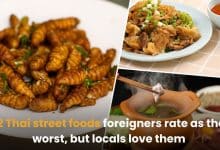The most popular Northern Thai dishes

Each region in Thailand offers a distinct and unique variety of dishes. Some of Thailand’s most delicious dishes come from the northern part of the country. Set among mountain valleys with a cool climate, Northern Thai Food is highly influenced by Burmese cuisines. In addition, it’s relatively mellow compared to Northeastern (Isaan) cuisine. Below, we’ve compiled some of our favourite Northern Thai dishes.
1. Khao Soi (Curry Noodle Soup)
Khao soi is possibly the most popular Northern Thai food, and it should be on top of your list when trying Thai food. Mainly made of egg noodles and curry, the dish has tame flavours that will surely delight your taste buds. The base of the soup consists of a combination of coconut milk and red curry paste, making it slightly spicy. The soup is then served with egg noodles and a choice of meat and topped with chopped cilantro and crispy egg noodles. You can usually add lime, onion, pickled cabbage, and chilli to make the dish even more flavourful. The meat in Khao Soi can include pork, chicken, or beef, but pork is the most popular option among locals. There are also vegetarian variations of this spectacular dish.
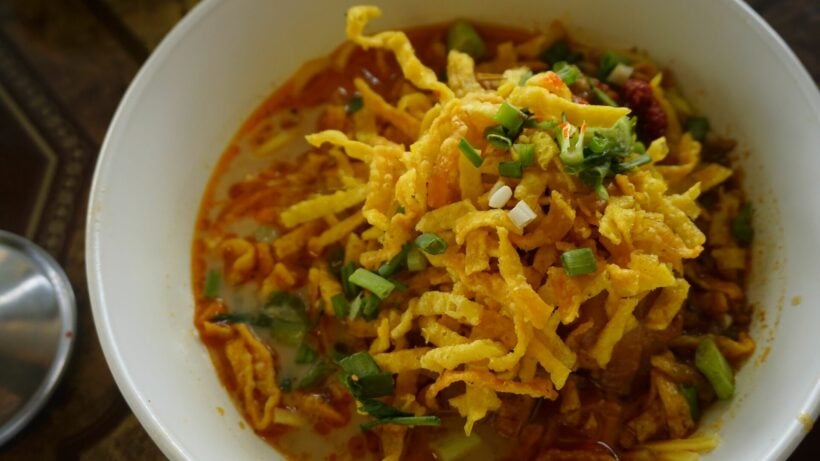
2. Sai Oua (Northern Thai Sausage)
Often known as ‘Chiang Mai Sausage,’ Sai Oua is a Northern Thai version of sausage. The sausage combines pork with red curry paste, kaffir lime leaves, chillies, lemongrass, garlic, and galangal. Together, these ingredients created a delicious and slightly spicy sausage. These sausages are usually prepared in spiral lengths. They can be found in most local markets and street food stalls around Northern Thailand. You can eat it as is, as an appetiser, or with sticky rice.

3. Miang Kham (Leaf Wrapped Bites)
Miang Khan might be one of the unusual dishes you can only try in Northern Thailand. It’s the perfect introduction to the local flavours. The dish consists of customisable ingredients, which usually include shallot, ginger, chillies, coconut, lime bits, and peanuts. These ingredients are then wrapped in Cha Plu Leaves. Miang Kham is traditionally served in a do-it-yourself setting, so you can experiment with whatever ingredients you want to include. You can make it as sweet, sour, salty, and spicy as you want. Miang Kham is also available pre-wrapped in food markets.
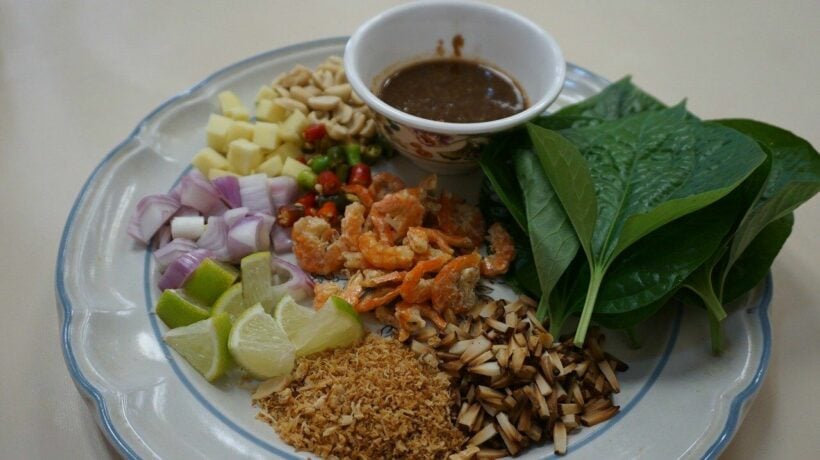
4. Kaeng Hang Lei (Northern Pork Curry)
If you can’t really handle spicy food, Kaeng Hang Lei is the perfect Northern Thai food to try. It’s a stewed pork curry that consists of tender pork pieces. It’s possibly one of the least spicy curries in Thailand. Since it uses tomato as one of the main ingredients, it tastes slightly fruity. There are some Burmese influences in this dish as it includes ingredients like turmeric, ginger, tamarind, and garlic.
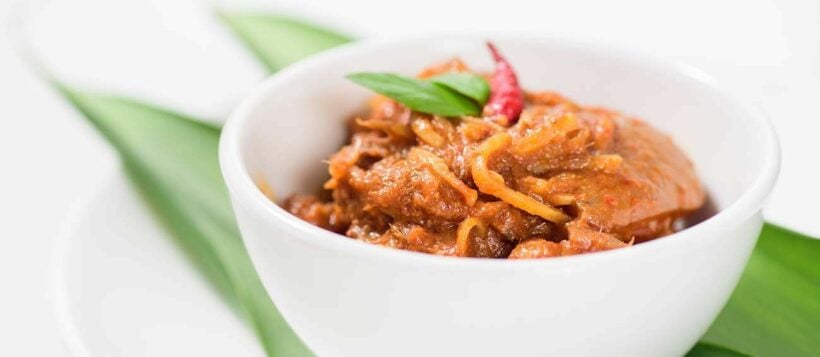
5. Nam Phrik Noom & Nam Phrik Ong (Chilli Dips)
Nam phrik, or chilli dip, is a traditional sauce popular in Northern Thailand and an essential part of a meal in the region. There are many types of nam phrik in the country, but nam phrik noom and nam phrik ong are among the most popular. Nam phrik room consists of a combination of roasted green chilli, garlic, and onion. On the other hand, nam phrik one is made of red chilli, bird’s eye chilli, ground pork, and tomato. The dip is usually paired with Kap Moo (deep fried pork skins), fresh vegetables, and sticky rice.
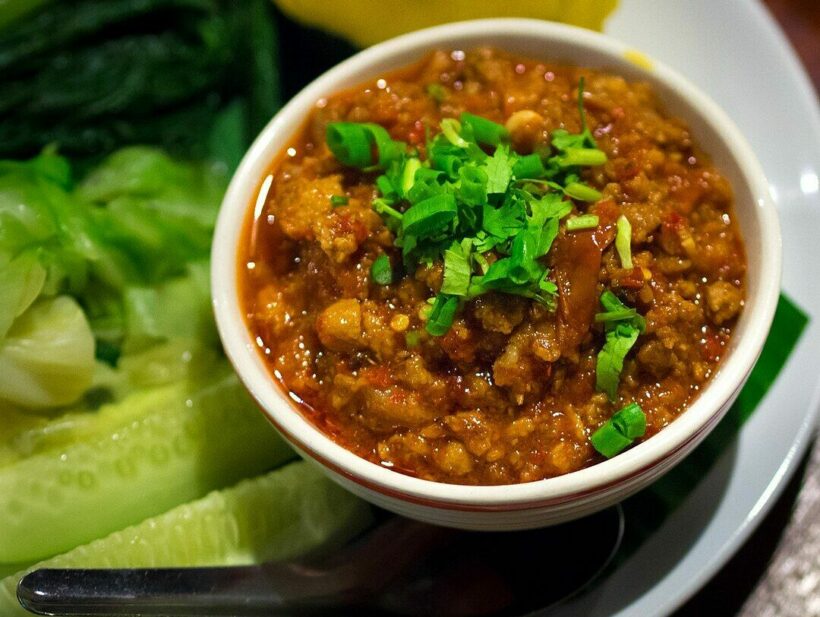
6. Kaeng Khanun (Unripe Jackfruit Curry)
Kaeng khanun is a soup curry made with young unripe jackfruit, cherry tomatoes, betel leaves, dried chillies, and herbs. It’s one of the most vegetarian-friendly dishes in Northern Thailand, but meat lovers can request chunks of pork in the soup. Kaeng khanun is hot and spicy, similar to tom yum. Although it’s not as popular as tom yum, it’s an interesting dish to try if you’re looking for a different flavour experience in Northern Thailand.
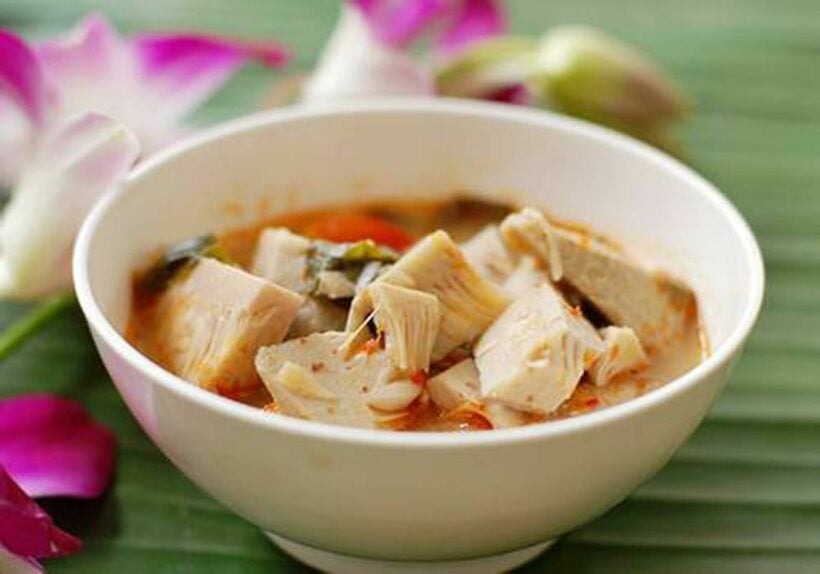
7. Larb Muang Moo (Spicy Meat Salad)
Larb Muang moo, also known simply as laab, is a Northern Thai-style spicy meat salad. The dish originates from Laos, where it is the national dish. There is a wide variety of laab in Northern Thailand. The salad is usually made of choices of meats like pork, chicken, beef, and duck. Mushrooms might also be used for vegan options. The meat or mushroom is then dressed in mint, dried chillies, palm sugar, lime, fish sauces, and herbs. You can enjoy it with sticky rice, rice noodles, or raw vegetables. Since the salad can be really spicy, it’s not recommended for those with a less fiery palate. Be aware that some laab in Northern Thailand may consist of raw pork, offal, and pork blood – so if you can’t stomach raw pork and blood, stick with the cooked option.
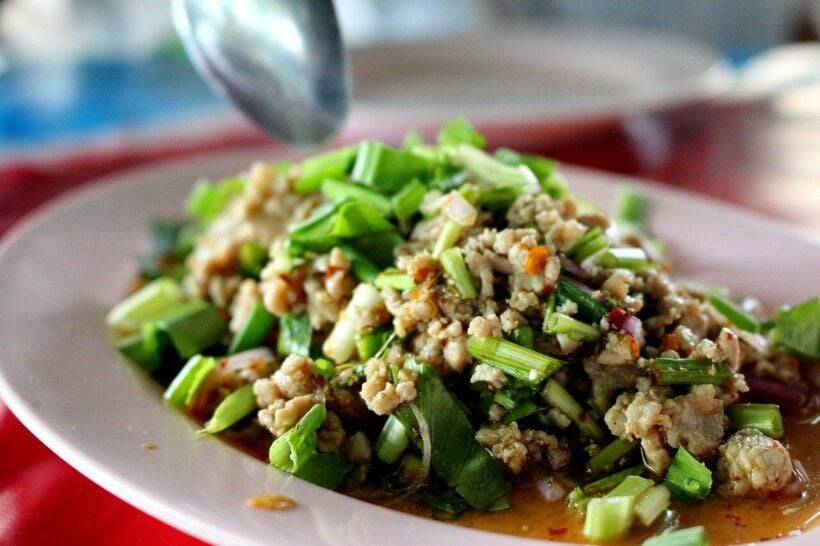
8. Khanom Jeen Nam Ngaio (Rice Noodles and Spicy Tomato Curry)
With a combination of rice noodles and spicy tomato curry, Khanom jeen nam ngiao offers a unique but delicious taste. In addition to the rice noodles and tomato curry, this delectable dish consists of chunks of pig blood, pork skin, and minced meatballs. It’s then garnished with beans, lime, and pickled cabbage.
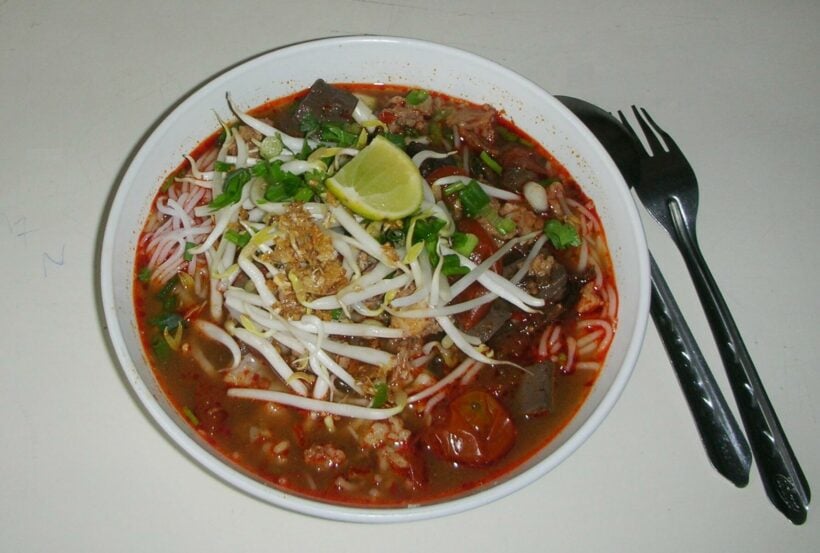
Although Northern Thai foods are not as prevalent as cuisines from other regions in Thailand, they are well worth trying during your time in the country.
If you’re looking for more delicious Thai food to try, check out our article on the best Thai breakfast!
Latest Thailand News
Follow The Thaiger on Google News:
